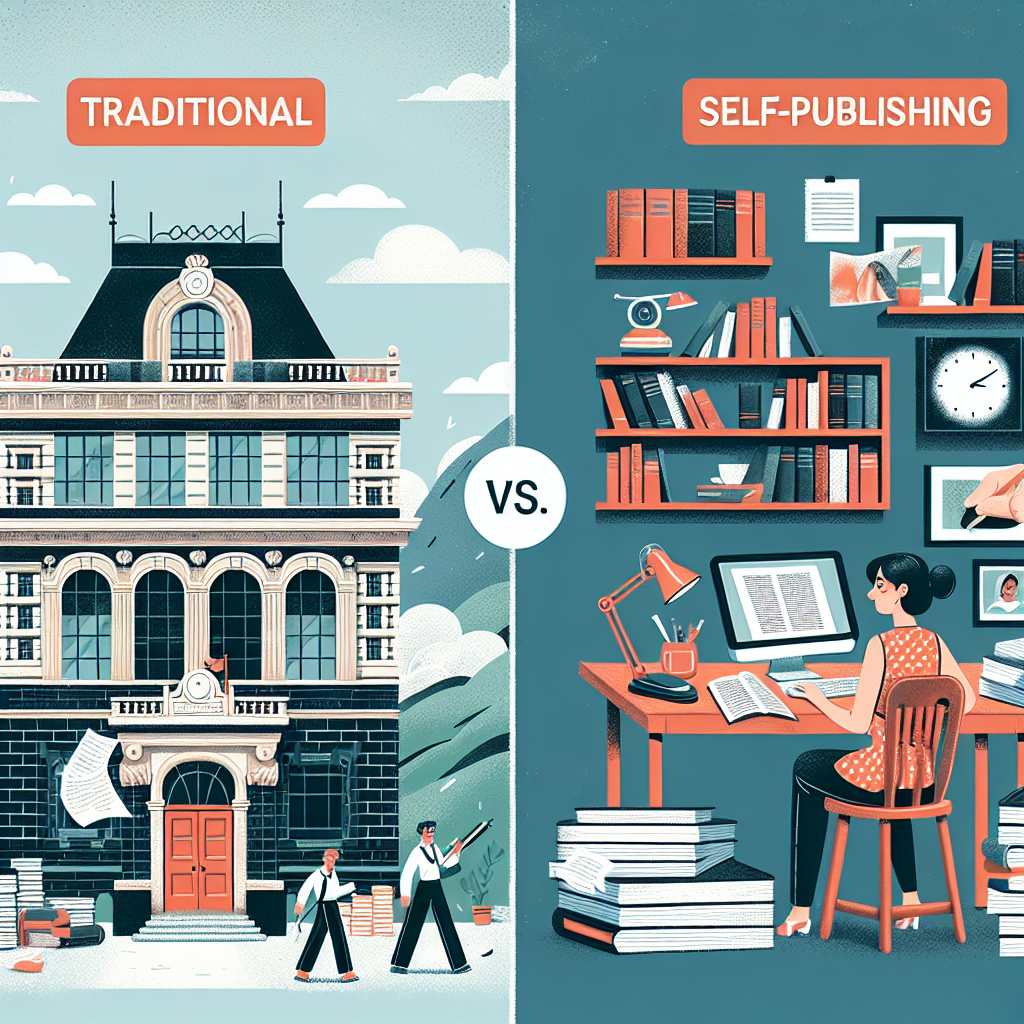Traditional Vs. Self-Publishing: Which Is Best For You?
Introduction
Transitioning from the traditional publishing route to self-publishing can be a daunting process. Many authors struggle with deciding which path is best for them. Let’s delve into the differences between traditional and self-publishing to help you make an informed decision.
Traditional Publishing
Traditional publishing involves submitting your manuscript to a publishing house, which handles the editing, design, printing, and distribution of your book. In exchange, the publisher typically takes a percentage of the book’s royalties. While traditional publishing can provide greater credibility and wider distribution, it often involves a lengthy process and less control over your work.
Pros
One of the main advantages of traditional publishing is the access to professional editing and design services. Publishers have established networks and can help promote your book to a broader audience. Additionally, having a traditional publisher can give you a sense of validation and legitimacy in the literary world.
Cons
However, traditional publishing can be a slow and competitive process. Authors may face rejection from multiple publishers before finding a suitable fit. Furthermore, traditional publishers often retain creative control over the content and marketing strategies of your book.
Self-Publishing
Self-publishing allows authors to retain full control over their work. Authors are responsible for editing, designing, and promoting their books. Self-publishing platforms like Amazon Kindle Direct Publishing have made it easier for authors to reach readers directly.
Pros
Self-publishing offers authors flexibility and creative freedom. Authors can set their own deadlines, pricing, and marketing strategies. Additionally, self-published authors have the potential to earn higher royalties compared to traditional publishing models.
Cons
On the flip side, self-publishing requires authors to take on all aspects of the publishing process themselves. This can be overwhelming for authors who are not familiar with marketing, design, or distribution. Self-published books may also lack the credibility and distribution channels of traditional publishers.
Which Is Best For You?
Determining whether traditional or self-publishing is right for you depends on your goals, resources, and preferences. If you value the support and prestige of a traditional publishing house, then traditional publishing may be the way to go. However, if you prefer creative control and faster publication timelines, self-publishing could be the better option.
Ultimately, the decision between traditional and self-publishing comes down to personal preference. Consider your goals, resources, and comfort level with different aspects of the publishing process. Whichever path you choose, remember that both traditional and self-publishing have their own unique advantages and challenges.
In conclusion, the choice between traditional and self-publishing is a personal one that should be based on your individual needs and goals as an author. Take the time to research and consider all aspects of both options before making a decision. Good luck on your publishing journey!
For more tips and advice on publishing, check out Edit Mojo’s blog posts on writing and editing.
